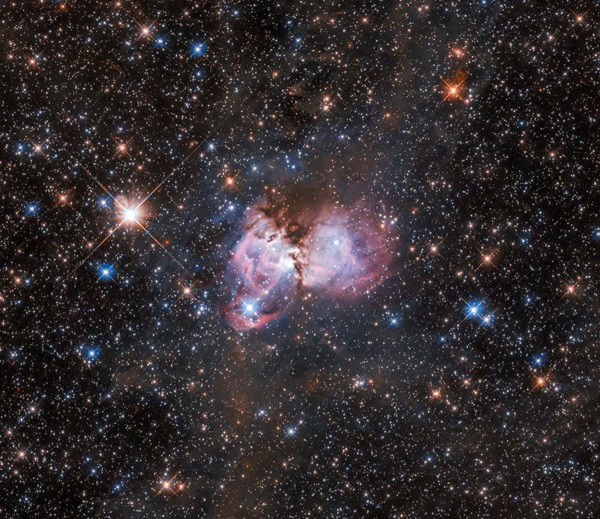Hubble dissects a tarantula to study how giant stars form – Astronomy Magazine
The region LHA 120-N 150 (seen here) sits on the outer edge of the gigantic Tarantula Nebula, the largest known star-forming region and home to many young, exceptionally massive stars.
ESA/Hubble, NASA, I. Stephens
The Hubble Space Telescope captured this detailed shot of a glowing cosmic cloud, LHA 120-N 150, at the edge of the Tarantula Nebula. Located some 160,000 light-years from Earth in the Large Magellanic Cloud, LHA 120-N 150 is thought to be the home of a mix of young stars and probably some dust clumps. By studying areas like this, astronomers are getting a glimpse into the origins of giant stars.
The Tarantula Nebula is known for pumping out hefty stars. In fact, the most massive known star, RMC 136a1, lives in the Tarantula. But astronomers aren’t sure exactly how massive stars form. Models indicated they should be born in litters, but observations suggest a significant chunk of massive stars (up to about 10 percent) are born alone.
Fortunately, due to the lack of cosmic dust blocking the Tarantula Nebula and LHA 120-N 150, astronomers can more easily probe the very early lives of the massive stars within. Unfortunately, it’s hard to tell whether a bright source is a young star or a dense dust cloud, or whether a star was truly born alone or simply got kicked out of its nursery.
This image provides far too little data to answer those questions. But by gathering more observations of regions like LHA 120-N 150 and closely analyzing the whole set, astronomers hope to get a handle on whether massive stars form in groups or in isolation.
Moving forward, astronomers will continue to closely examine the Tarantula’s leglike tendrils and filaments for other intriguing areas like LHA 120-N 150 that can help them unlock the secrets to massive stars.






